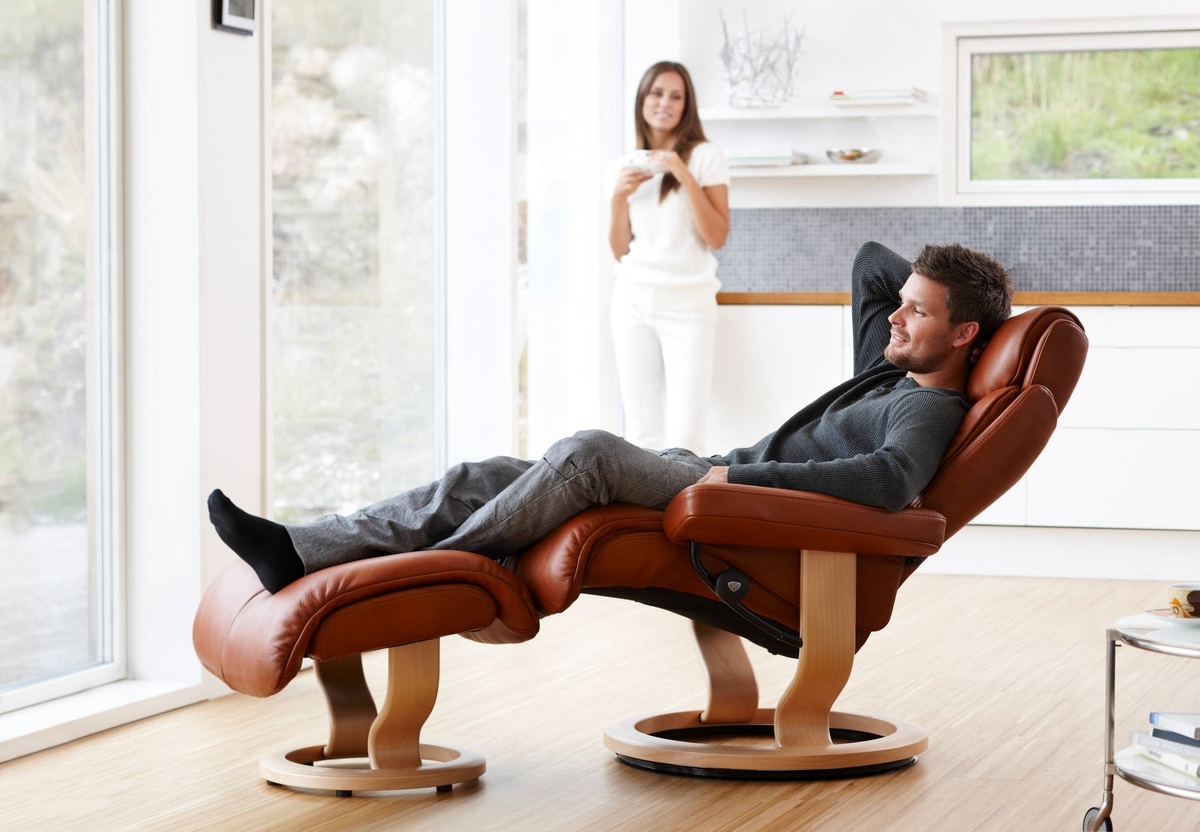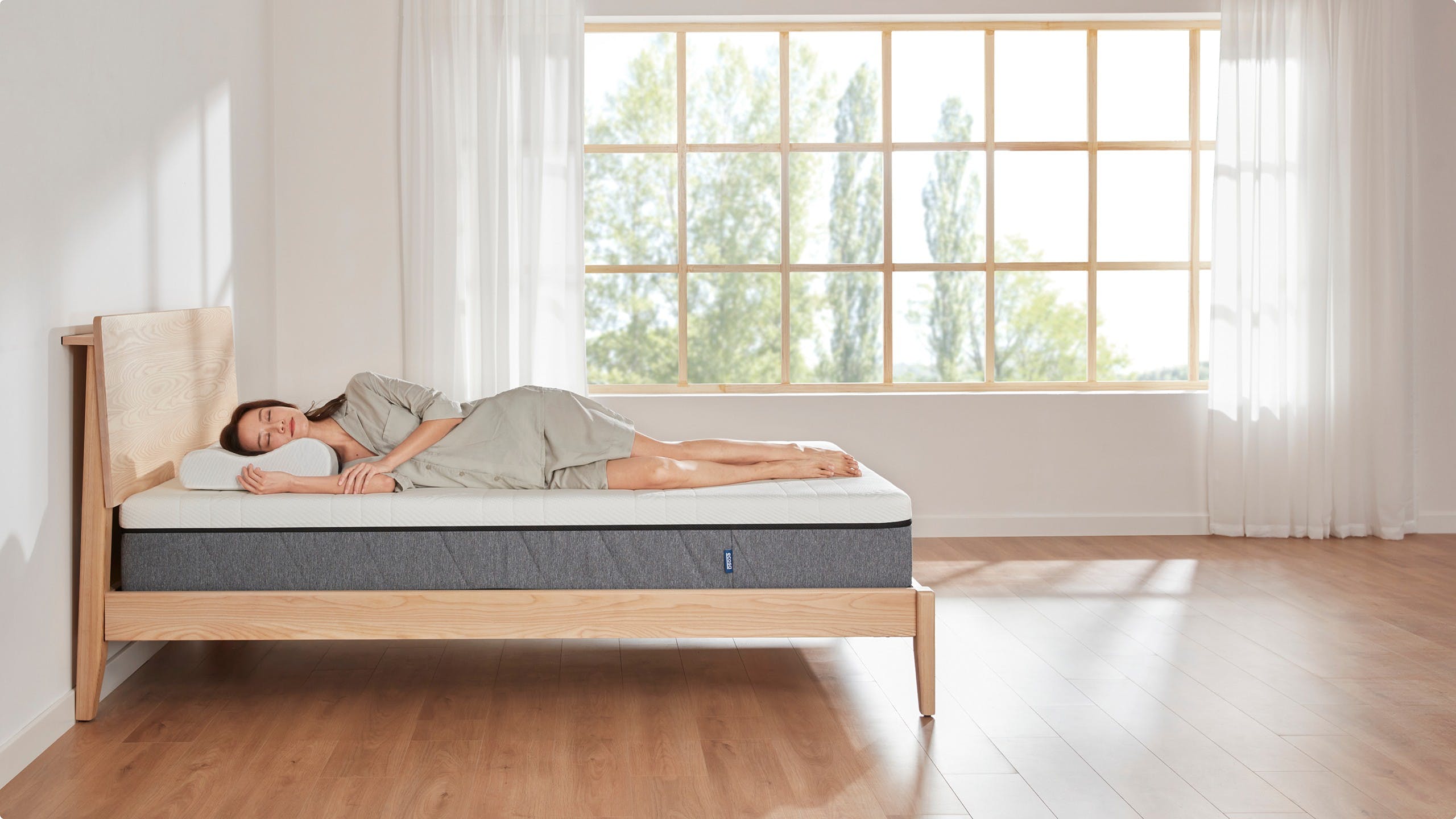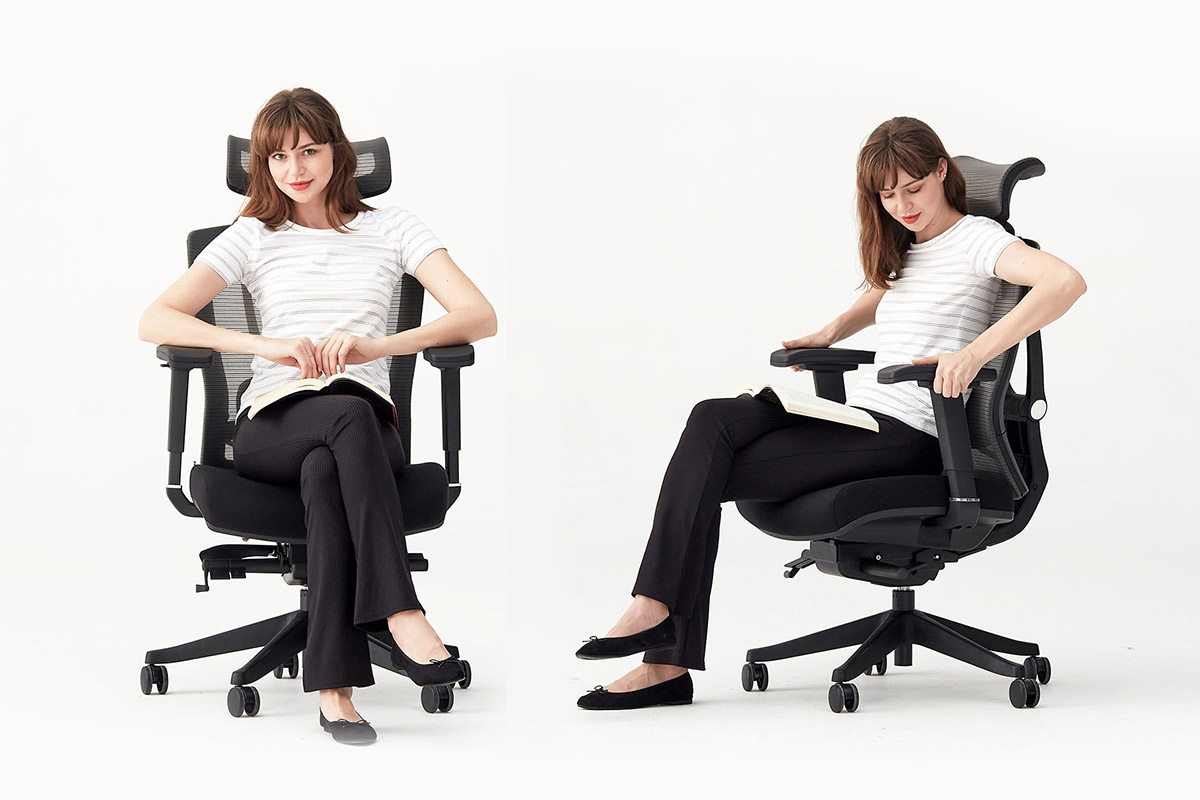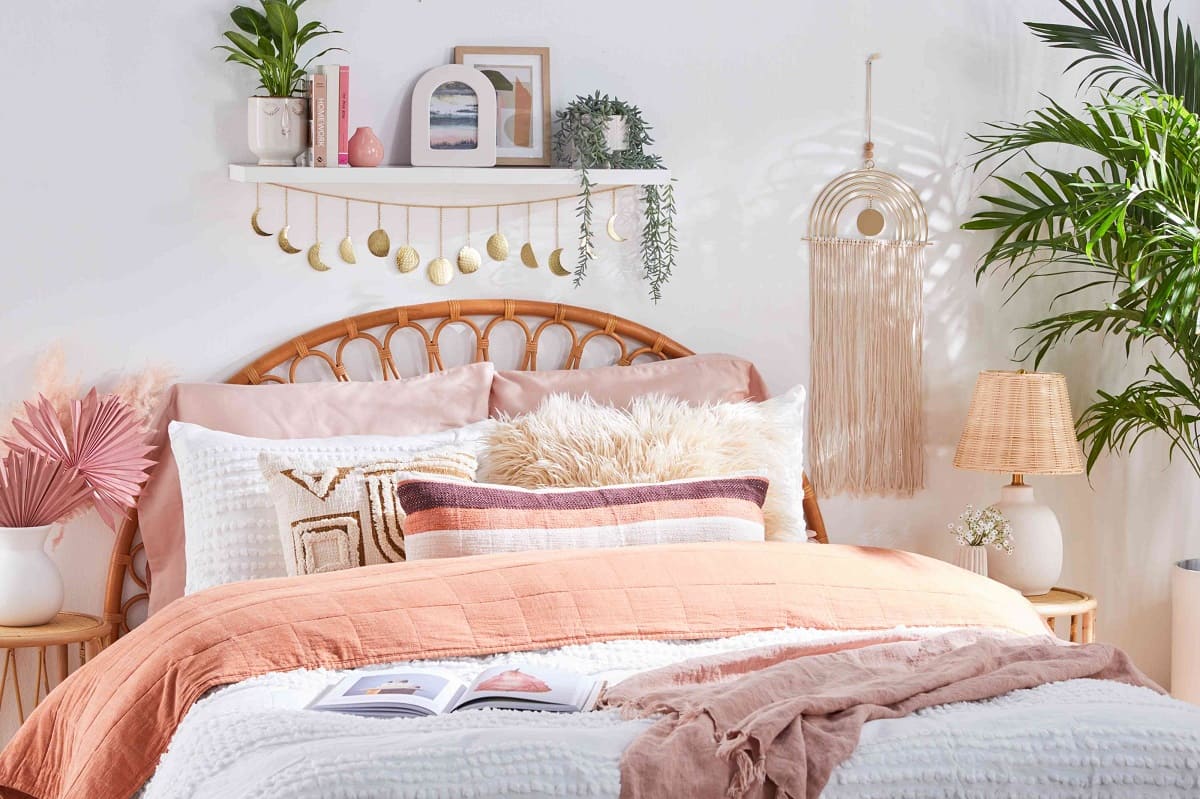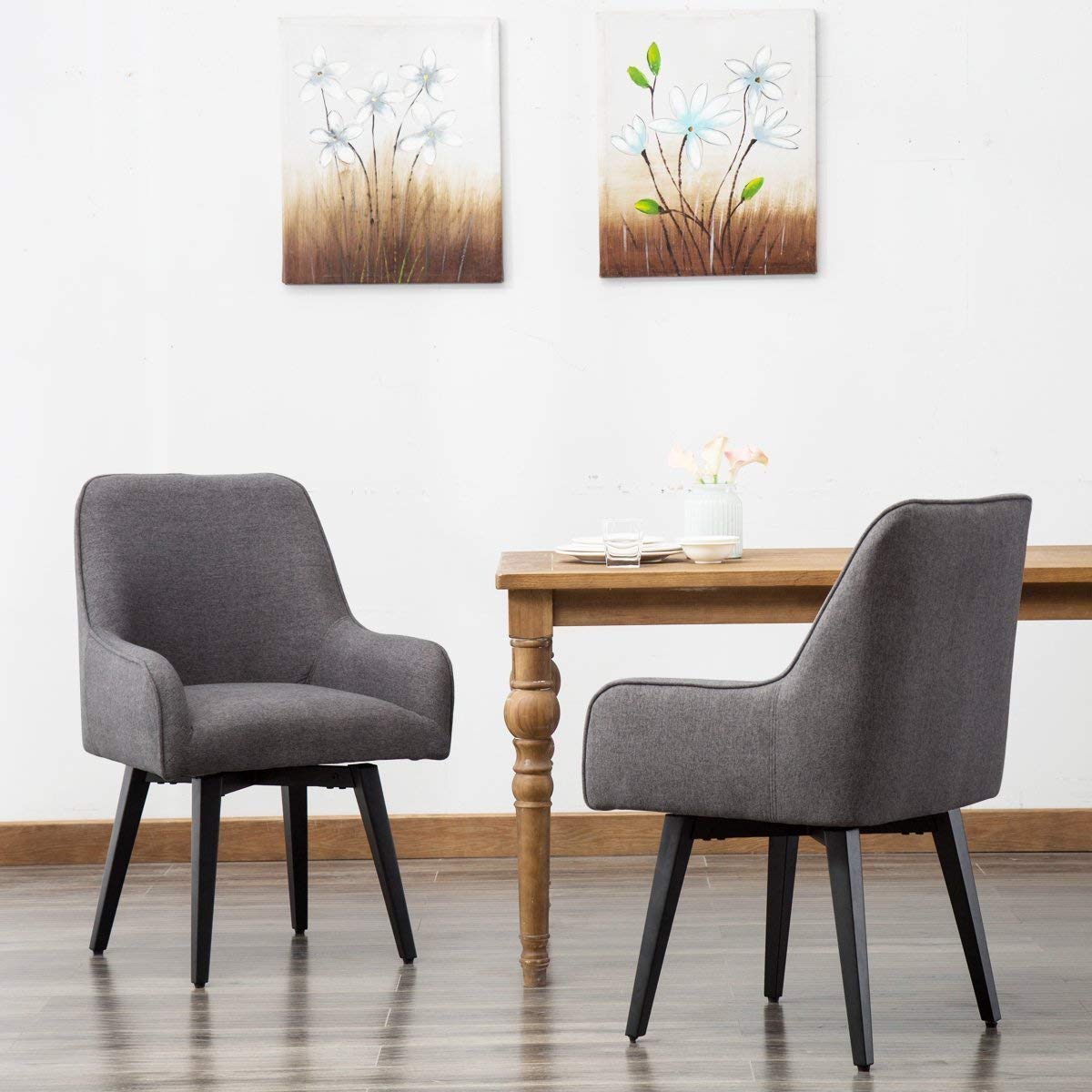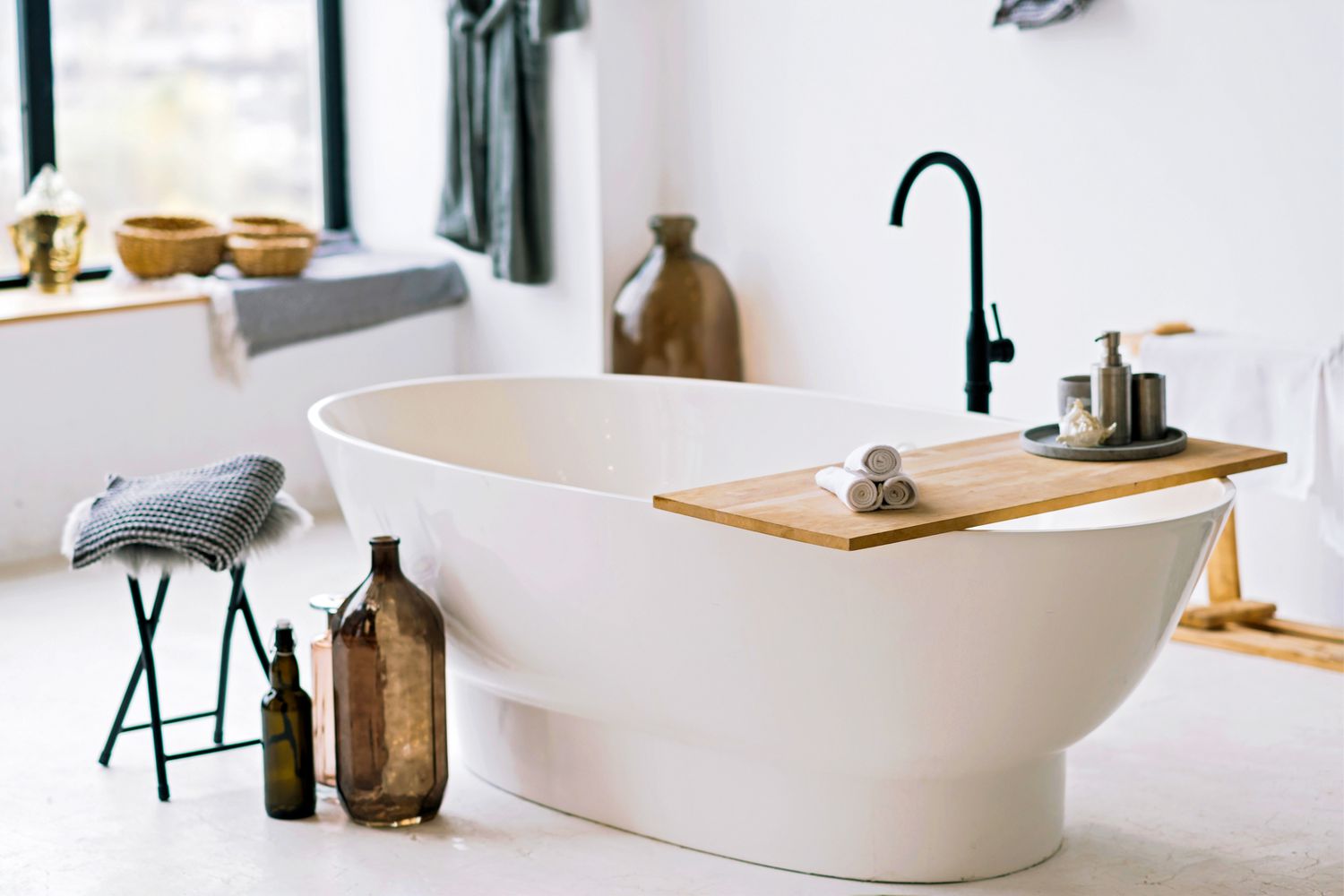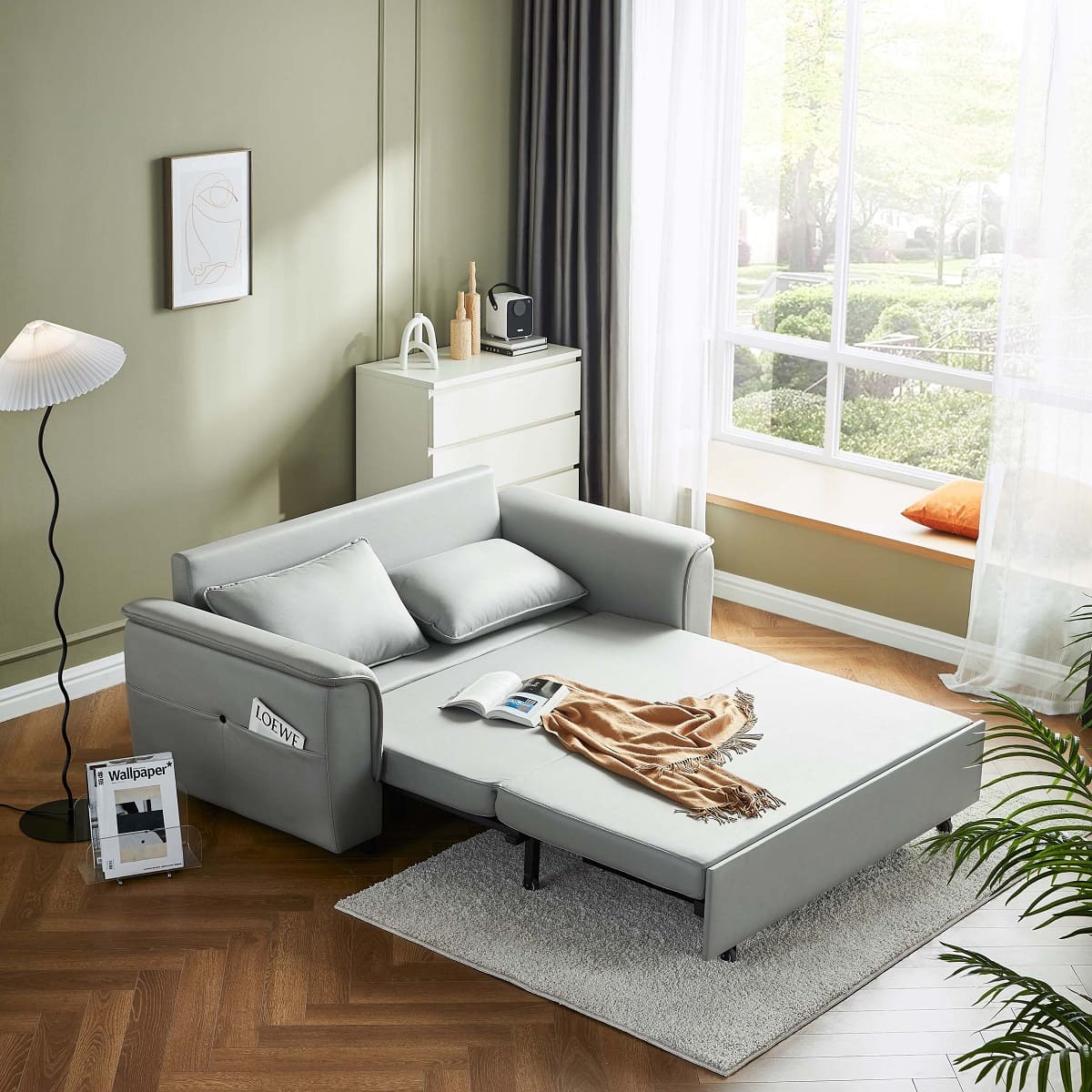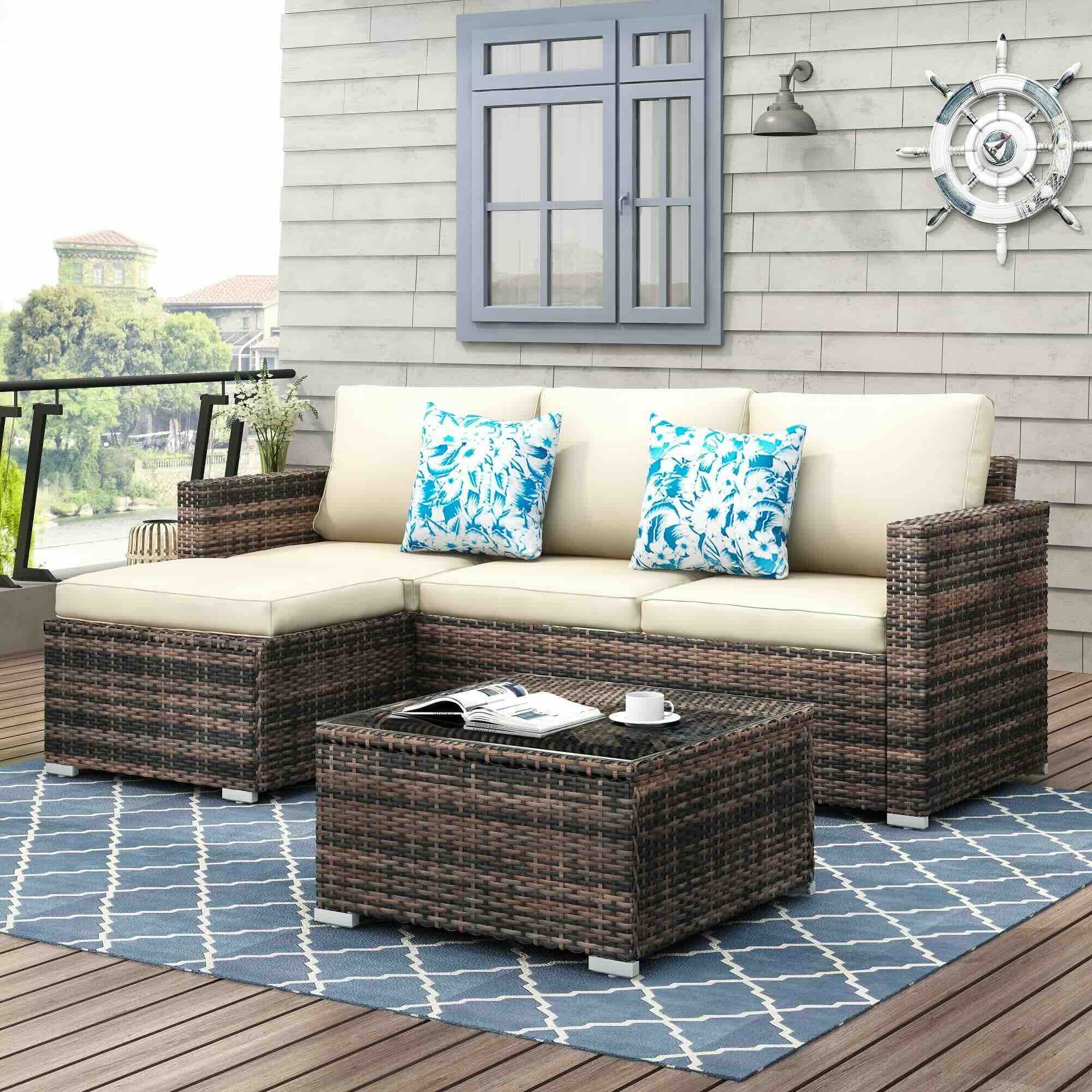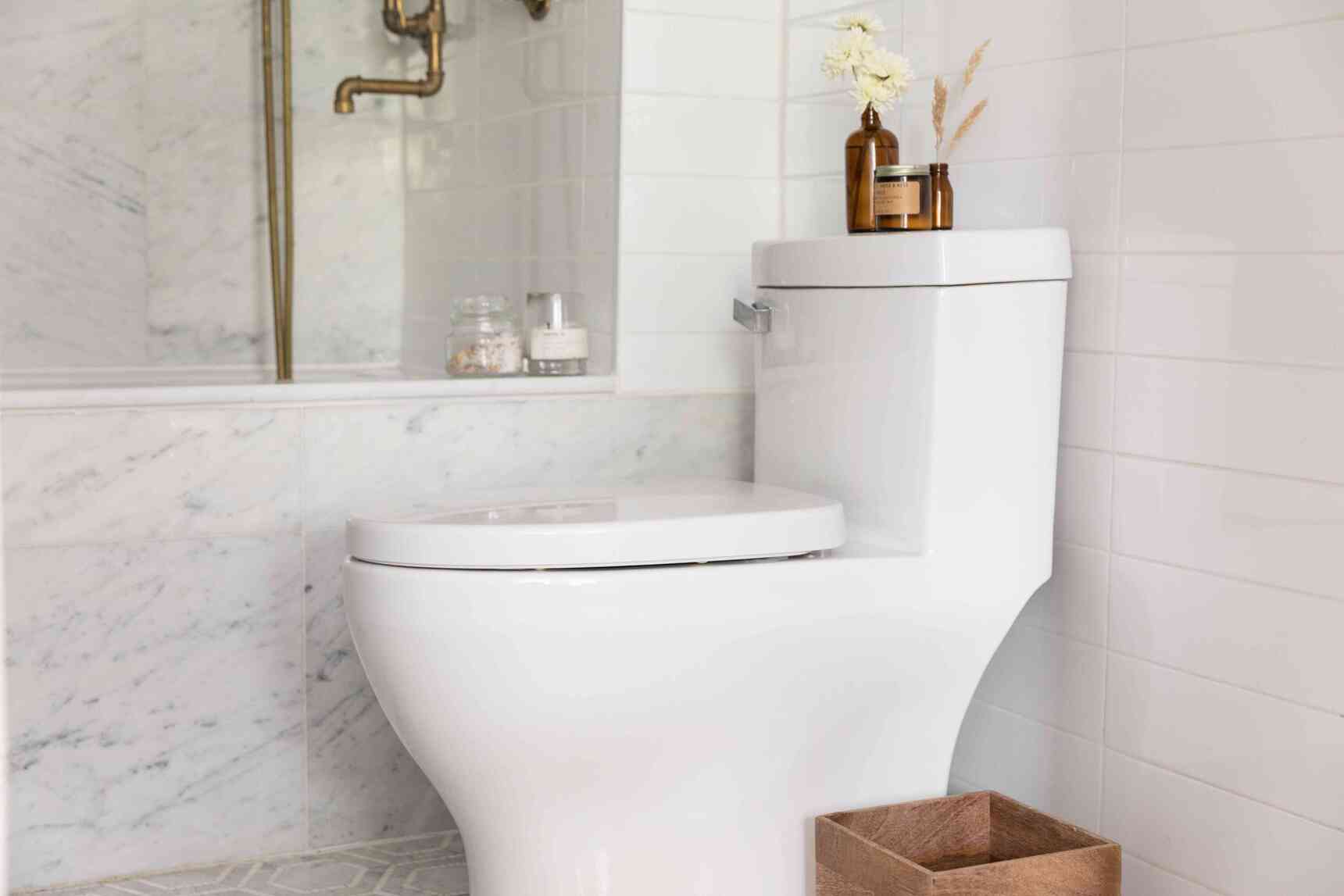Home>Furniture>Bedroom Furniture>How To Make My Mattress More Comfortable
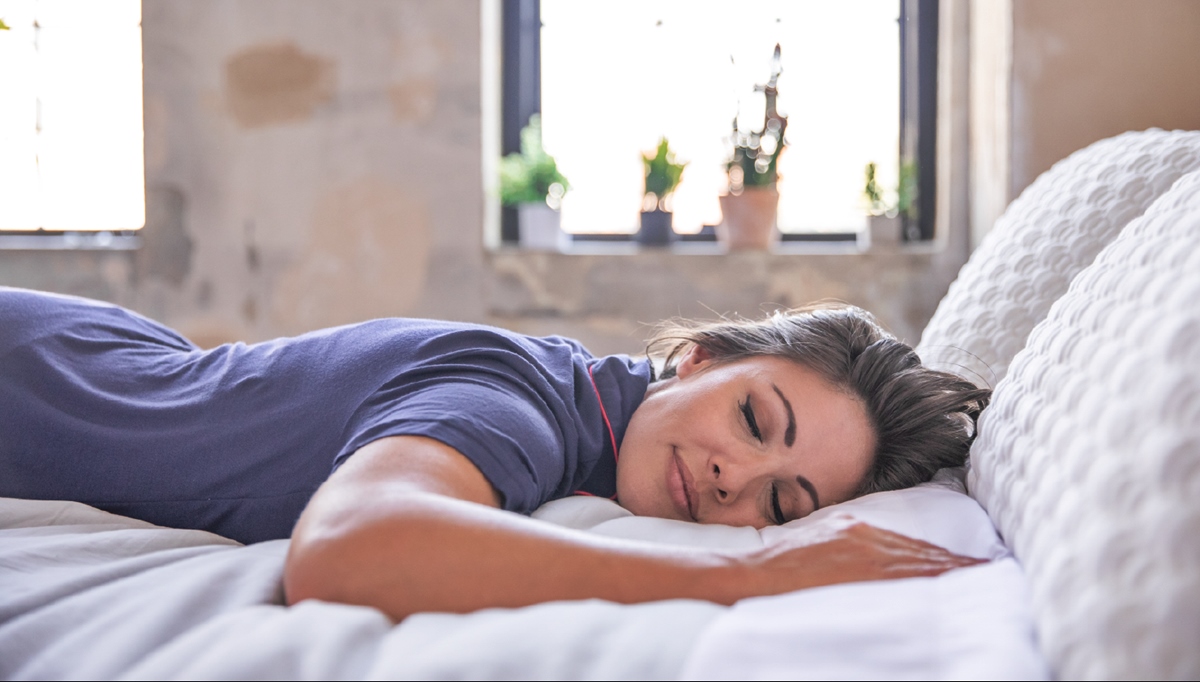

Bedroom Furniture
How To Make My Mattress More Comfortable
Modified: January 9, 2024
Learn how to make your mattress more comfortable with our bedroom furniture solutions. Discover tips and tricks to transform your bed into a cozy retreat for a good night's sleep.
(Many of the links in this article redirect to a specific reviewed product. Your purchase of these products through affiliate links helps to generate commission for Storables.com, at no extra cost. Learn more)
Introduction
Sleep is a vital part of our lives, and the quality of our sleep can greatly impact our overall well-being. One of the key factors in achieving a good night’s rest is having a comfortable mattress. However, not all mattresses are created equal, and sometimes the one we have may not meet our specific comfort needs. But fear not, there are several ways to make your mattress more comfortable without the need for an expensive replacement.
In this article, we will explore various methods to enhance the comfort of your mattress, from using mattress toppers and pads to trying different pillows and adjusting the temperature and humidity in your bedroom. We will also discuss the importance of keeping your mattress clean and fresh, as well as the benefits of regularly rotating and flipping it. Additionally, we will look at how body pillows or cushions, along with improvements in bedroom lighting and noise levels, can further contribute to a more comfortable and restful sleep.
So, if you find yourself tossing and turning at night or waking up with aches and pains, read on to discover how you can transform your existing mattress into a cozy haven of comfort.
Key Takeaways:
- Transform your existing mattress into a cozy haven of comfort by choosing the right mattress topper, adding a mattress pad, and trying different pillows for personalized support and enhanced sleep quality.
- Create a serene sleep environment by adjusting temperature and humidity, keeping your mattress clean and fresh, and using body pillows or cushions for targeted support. Experiment with lighting and noise levels for optimal relaxation.
Read more: How To Make A Mattress More Comfortable
Choosing the Right Mattress Topper
A mattress topper is a great way to add an extra layer of comfort to your existing mattress. When selecting a mattress topper, there are a few factors to consider:
- Material: Mattress toppers are available in various materials such as memory foam, latex, down, and polyester. Each material offers different levels of softness, support, and breathability. Consider your personal preferences and any specific requirements you have, such as allergies or sensitivity to certain materials.
- Thickness: The thickness of the mattress topper will affect how much additional cushioning it provides. Thicker toppers are generally plusher and offer more contouring support, while thinner ones provide a subtle layer of comfort.
- Firmness: If your mattress is too firm, you may want to opt for a softer mattress topper to add a plush feel. On the other hand, if your mattress is too soft, a firmer topper can provide additional support. Consider your preferred level of firmness when choosing a mattress topper.
- Temperature Regulation: Some mattress toppers are designed with cooling properties, making them ideal for those who tend to sleep hot. Look for toppers with features like gel-infused memory foam or breathable fabrics to help regulate your body temperature during the night.
- Price: Set a budget for your mattress topper purchase. Keep in mind that higher-quality materials and features may come with a higher price tag, but they can also offer more durability and long-term comfort.
Once you’ve narrowed down your options based on these considerations, it’s a good idea to read customer reviews and gather feedback from others who have used the toppers you’re interested in. Their experiences can provide valuable insights into the comfort and durability of the toppers.
Remember, the goal of a mattress topper is to provide an additional layer of comfort, so it’s important to choose one that complements your sleeping preferences and addresses any specific issues with your current mattress. By selecting the right mattress topper, you can transform your sleep experience and wake up feeling refreshed and rejuvenated.
Adding a Mattress Pad
Another way to make your mattress more comfortable is by adding a mattress pad. A mattress pad is a thin layer of cushioning that sits on top of your mattress, providing an extra level of softness and protection. Here are some benefits of using a mattress pad:
- Enhanced Comfort: A mattress pad can add an extra layer of plushness to your mattress, providing a softer and more comfortable sleeping surface. It can help alleviate pressure points and promote a more restful sleep.
- Protection: Mattress pads act as a protective barrier between you and your mattress, helping to guard against spills, stains, dust mites, and allergens. They are typically machine-washable, making them easy to clean and maintain.
- Temperature Regulation: Some mattress pads are designed to regulate temperature, offering cooling or heating properties. If you tend to sleep hot or cold, look for mattress pads that incorporate cooling gels or moisture-wicking fabrics to help keep you comfortable throughout the night.
- Hygiene: Regularly washing your mattress pad helps to keep your sleep environment clean and fresh. This can contribute to better overall sleep hygiene and reduce the presence of allergens that can disrupt your sleep.
When choosing a mattress pad, consider the following factors:
- Material: Mattress pads come in various materials such as cotton, polyester, or a blend of both. Each material has its own unique feel and characteristics. Choose one that matches your preferences in terms of softness, breathability, and durability.
- Fit: Ensure that the mattress pad you choose fits your mattress properly. Look for pads with deep pockets or elasticized skirts that can accommodate different mattress depths. A well-fitted pad will stay in place and provide maximum comfort.
- Quality: Consider investing in a high-quality mattress pad that offers durability and long-lasting comfort. Although they may be slightly more expensive upfront, they can save you money in the long run by protecting your mattress and prolonging its lifespan.
By adding a mattress pad to your bed, you can create a more luxuriously soft and cozy sleeping surface while also protecting your mattress from wear and tear. It’s a simple and cost-effective way to improve your overall sleep experience.
Trying Different Pillows
When it comes to creating a comfortable sleep environment, the importance of having the right pillow cannot be overstated. Your pillow plays a crucial role in supporting your head, neck, and spine alignment while you sleep. If you’re experiencing discomfort or waking up with neck pain, it may be time to try different pillows. Here are some options to consider:
- Memory Foam: Memory foam pillows contour to the shape of your head and neck, providing personalized support and relieving pressure points. They can be particularly beneficial for individuals with neck or back pain.
- Down or Down Alternative: Down pillows offer a soft and luxurious feel, providing gentle support. If you prefer a down-like feel without the potential allergenic response, consider down alternative pillows made from synthetic fibers.
- Latex: Latex pillows offer a supportive yet responsive feel. They are hypoallergenic and resistant to dust mites, making them a great option for individuals with allergies.
- Buckwheat: Buckwheat pillows are filled with natural buckwheat hulls. They conform to the shape of your head and provide excellent breathability and airflow, offering a cool and supportive sleep surface.
- Adjustable: Adjustable pillows allow you to customize their loft by adding or removing fill. This provides flexibility to meet your specific comfort needs, regardless of your sleeping position.
When selecting a pillow, consider your preferred sleeping position:
- Back Sleepers: Back sleepers should choose a pillow with medium loft and support to maintain proper alignment of the head and neck.
- Side Sleepers: Side sleepers benefit from a pillow with higher loft to fill the space between the head and shoulder, ensuring proper alignment.
- Stomach Sleepers: Stomach sleepers should opt for a softer and flatter pillow to prevent strain on the neck and spine.
It’s also recommended to try out different pillows for a few nights to gauge their comfort and support levels. Often, what works for one person may not work for another, so personal preference plays a significant role in selecting the right pillow.
Remember, pillows do wear out over time, so it’s essential to replace them every 1-2 years or as needed. By finding the perfect pillow for your needs, you can significantly improve your sleep quality and wake up feeling refreshed and pain-free.
Adjusting the Temperature and Humidity
The temperature and humidity in your bedroom can have a significant impact on your sleep quality and comfort. Finding the right balance is crucial for creating a conducive sleep environment. Here are some tips to help you adjust the temperature and humidity:
- Temperature:
1. Set the thermostat to a comfortable temperature. The National Sleep Foundation suggests keeping your bedroom between 60 and 67 degrees Fahrenheit (15 to 19 degrees Celsius) for optimal sleep. Experiment with different temperatures to find what works best for you.
2. Use bedding appropriate for the season. In warmer months, choose lighter sheets and blankets made from breathable materials, such as cotton or bamboo. During colder months, opt for thicker blankets and flannel or fleece sheets to provide extra warmth.
3. Consider using a fan or air conditioner to regulate airflow and maintain a cooler temperature. Cooling devices can help circulate the air and create a more comfortable sleep environment, especially if you tend to sleep hot.
- Humidity:
1. Invest in a humidifier or dehumidifier, depending on your needs. Humidifiers add moisture to the air, which can alleviate dryness and help with respiratory issues. Dehumidifiers, on the other hand, remove excess moisture, reducing the risk of mold and mildew growth.
2. Aim for a relative humidity level between 30% and 50% for optimal comfort. This range helps prevent dryness, congestion, and potential allergies caused by excessively dry or humid air.
3. Use natural remedies, such as plants or open containers of water, to increase humidity levels. Placing a bowl of water near a heat source or strategically positioning houseplants in your bedroom can help add moisture to the air.
By adjusting the temperature and humidity in your bedroom, you can create a more comfortable sleep environment that promotes relaxation and supports better sleep quality. Experiment with different settings until you find what works best for you.
Consider adding a mattress topper for extra cushioning and support. Look for one made of memory foam, latex, or down alternative for added comfort.
Read more: How To Make An Air Mattress More Comfortable
Keeping the Mattress Clean and Fresh
Maintaining a clean and fresh mattress is essential not only for hygiene but also for your comfort and overall sleep experience. Here are some tips to help you keep your mattress clean and fresh:
- Regularly clean your bedding: Wash your sheets, pillowcases, and mattress protectors regularly to remove sweat, oils, and dirt that can accumulate over time. Follow the manufacturer’s instructions for proper care and use a gentle, hypoallergenic detergent to avoid irritation or allergies.
- Protect your mattress: Use a mattress protector or cover to safeguard your mattress from spills, stains, dust mites, and allergens. A waterproof protector can provide an added layer of protection and prevent liquids from seeping into the mattress.
- Vacuum your mattress: Vacuuming your mattress every few months helps to remove dust, dirt, and allergens that can accumulate on the surface. Use a handheld vacuum or the upholstery attachment of your vacuum cleaner to thoroughly clean both sides of the mattress.
- Spot clean stains: If you accidentally spill something on your mattress, act quickly to clean the stain. Blot the area with a mixture of mild detergent and water, or use a stain remover specifically designed for mattresses. Avoid using excessive water, as moisture can promote the growth of mold and mildew.
- Air out your mattress: Every few months, remove all bedding and allow your mattress to air out. This process helps to remove odors and freshen up the mattress. Open the windows or place the mattress in a well-ventilated area for a few hours.
- Rotate and flip your mattress: To prevent uneven wear and sagging, rotate your mattress 180 degrees every three to six months. Additionally, if your mattress is double-sided, you can flip it over to distribute the weight evenly and prolong its lifespan. Check your mattress manufacturer’s guidelines for specific instructions on flipping.
By following these cleaning and maintenance practices, you can extend the life of your mattress and ensure a cleaner, fresher sleeping environment. A clean and well-cared-for mattress can contribute to a healthier and more comfortable sleep experience.
Rotating and Flipping the Mattress
Rotating and flipping your mattress is an important maintenance practice that can help prolong its lifespan and ensure even wear. While not all mattresses are designed to be flipped, rotating them is beneficial for distributing weight and reducing the formation of sagging areas. Here’s how you can properly rotate and flip your mattress:
- Check the manufacturer’s instructions: Before rotating or flipping your mattress, review the manufacturer’s guidelines. Some mattresses are one-sided and should only be rotated, while others are designed for both rotation and flipping. Following the manufacturer’s recommendations will prevent any potential damage to the mattress.
- Rotate the mattress: Every three to six months, rotate your mattress 180 degrees. This means moving the head of the mattress to the foot of the bed and vice versa. Rotating the mattress helps to promote even distribution of weight and usage, reducing the risk of sagging in specific areas.
- Flip the mattress (if applicable): If your mattress is double-sided and designed for flipping, it’s recommended to do so once or twice a year. Flipping the mattress helps to equalize the wear and tear on both sides, prolonging its overall longevity. Make sure to follow the recommended flipping pattern provided by the manufacturer.
- Enlist the help of others: Flipping and rotating a mattress can be a physically demanding task, especially if you have a larger or heavier mattress. Enlist the help of a friend or family member to make the process easier and safer.
- Take advantage of reminders: To ensure you don’t forget to rotate and flip your mattress, consider setting reminders on your phone or marking it on your calendar. Regular maintenance will help keep your mattress in optimal condition for a more comfortable sleep.
It’s worth noting that not all modern mattresses require flipping due to advancements in design and construction. Make sure to consult your mattress manufacturer’s recommendations to determine the best maintenance routine for your specific mattress type.
By regularly rotating and, if applicable, flipping your mattress, you can promote even wear, reduce the risk of body impressions, and extend the overall lifespan of your mattress, ensuring a more comfortable and supportive sleep surface for years to come.
Using Body Pillows or Cushions
If you’re looking to enhance the comfort of your mattress and improve your sleep posture, using body pillows or cushions can be a game-changer. These additional support aids can provide targeted support to various areas of your body, promoting better alignment and reducing pressure points. Here are some ways you can use body pillows or cushions to maximize your comfort:
- Full-Length Body Pillow: A full-length body pillow is designed to support your entire body, from head to toe. It can be especially beneficial for side sleepers, as it helps maintain proper spinal alignment and reduces strain on the hips and shoulders. Place the body pillow alongside you, with one end supporting your head and the other between your legs for optimal support.
- Knee Pillow: A knee pillow is a smaller cushion that is typically placed between your knees when lying on your side. It helps align your hips, pelvis, and spine, easing pressure on your lower back and reducing discomfort. Using a knee pillow can provide relief for individuals with back pain or hip issues.
- Cervical Pillow: A cervical pillow is designed to support the natural curve of the neck and promote proper spinal alignment. It can provide targeted support for individuals who experience neck pain or stiffness. Place the cervical pillow under your neck, allowing it to contour to the natural curve of your spine.
- Wedge Pillow: A wedge pillow is a triangular-shaped cushion that provides elevation and support. It can be placed under different parts of your body, such as your back, legs, or head, to alleviate discomfort and improve circulation. Wedge pillows are particularly useful for individuals with acid reflux, respiratory issues, or circulation problems.
- Body Cushions or Bolsters: Body cushions or bolsters are versatile support aids that can be used under various parts of your body, such as your knees, ankles, or back. They provide targeted support and can help relieve tension and pressure. Experiment with different positions and placements to find what works best for your specific needs.
When selecting body pillows or cushions, consider your specific sleep needs and any areas of discomfort or pain. Choose pillows or cushions with the appropriate firmness and material that provide optimal support and comfort for your body.
Integrating body pillows or cushions into your sleep routine can help improve alignment, relieve pressure points, and enhance overall comfort. By providing targeted support where needed, you can wake up feeling more rested and rejuvenated.
Improving Bedroom Lighting and Noise Levels
The ambiance of your bedroom plays a significant role in creating a comfortable and relaxing sleep environment. Two essential aspects to consider are lighting and noise levels. By making adjustments in these areas, you can create a more serene and conducive atmosphere for sleep. Here are some tips to improve your bedroom lighting and noise levels:
- Lighting:
1. Adjustable Lighting: Install adjustable lighting fixtures in your bedroom to control the intensity and brightness. Use dimmer switches or lamps with different settings to create a soothing and relaxing atmosphere. Dimming the lights in the evening signals to your body that it’s time to wind down and prepare for sleep.
2. Natural Light: During the day, maximize natural light by opening curtains or blinds. Sunlight not only brightens up your space but also helps regulate your circadian rhythm and improve your mood. Exposure to natural light during the day can have a positive impact on your sleep quality.
3. Screen Time: Minimize exposure to electronic screens, such as smartphones, tablets, and televisions, before bedtime. The blue light emitted from these devices can interfere with your body’s production of melatonin, a hormone that regulates sleep. Consider implementing a screen-free hour before bed to promote better sleep.
- Noise Levels:
1. Silence or White Noise: Evaluate the noise levels in your bedroom and consider using techniques to either block out external noises or provide a gentle background sound. You can use earplugs to block out noise if you live in a busy area. Alternatively, try using a white noise machine or a fan to create a soothing background noise that can mask disruptive sounds.
2. Bedroom Location: If possible, choose a bedroom location that is away from noisy areas of your home, such as the kitchen or main street. This can minimize the amount of external noise that enters your sleeping space.
3. Soundproofing: Consider using soundproofing materials or techniques to reduce noise transmission. Thick curtains, rugs, or sound-absorbing panels can help dampen external noise and create a quieter environment.
By addressing the lighting and noise levels in your bedroom, you can create a more serene and calming space that promotes relaxation and restful sleep. Experiment with different techniques until you find the optimal balance for your personal preferences.
Conclusion
Creating a comfortable and inviting sleep environment is essential for getting a good night’s rest. While investing in a new mattress may not always be feasible, there are several ways to enhance the comfort of your existing mattress without breaking the bank. By implementing the tips outlined in this article, you can transform your mattress into a cozy haven of comfort.
We discussed the importance of choosing the right mattress topper to add an extra layer of softness and support. We explored the benefits of using a mattress pad to protect your mattress and improve its overall hygiene. We also emphasized the significance of trying different pillows to find the perfect fit and support for your sleeping position.
In addition, we learned how adjusting the temperature and humidity in your bedroom can contribute to a more comfortable sleep experience. We highlighted the importance of keeping your mattress clean and fresh by incorporating regular cleaning routines and utilizing mattress protectors. We also covered the benefits of rotating and flipping your mattress to promote even wear and prolong its lifespan.
Furthermore, we discussed the advantages of using body pillows or cushions to provide targeted support and improve sleep posture. Lastly, we explored the impact of bedroom lighting and noise levels on sleep quality and provided tips on how to adjust them for a more peaceful and relaxing atmosphere.
Remember, finding the right combination of comfort-enhancing techniques may require some experimentation. Everyone’s preferences and needs vary, so feel free to adapt and modify these suggestions to suit your unique requirements.
By implementing these strategies, you can transform your bedroom into a haven of comfort and relaxation, ensuring a better night’s sleep and waking up feeling refreshed and rejuvenated each day.
Frequently Asked Questions about How To Make My Mattress More Comfortable
Was this page helpful?
At Storables.com, we guarantee accurate and reliable information. Our content, validated by Expert Board Contributors, is crafted following stringent Editorial Policies. We're committed to providing you with well-researched, expert-backed insights for all your informational needs.
